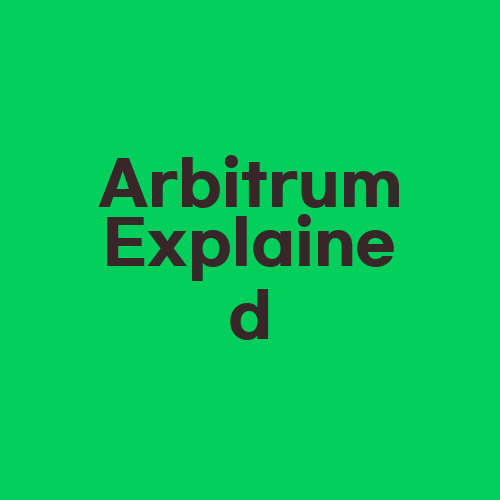Arbitrum Explained

Arbitrum Explained: The Ultimate Guide for Investors and Developers
What is Arbitrum?
Arbitrum is a layer-2 scaling solution for Ethereum, which aims to solve the scalability issues that Ethereum is currently facing. It is designed to increase the transaction throughput and reduce the high fees on the Ethereum network. Arbitrum uses an optimistic rollup to improve the network’s performance, which allows for faster transactions and lower gas fees.
Arbitrum is an open-source project that uses a sidechain to process transactions off the main Ethereum network. This approach reduces congestion on the main network while increasing the number of transactions that can be processed per second. Arbitrum is also compatible with Ethereum, allowing developers to create smart contracts that can be executed on both networks.
How does Arbitrum work?
Arbitrum uses a technique called optimistic rollups to increase the number of transactions that can be processed per second. An optimistic rollup is a way to bundle many transactions together, in a way that does not compromise the security of the underlying blockchain.
In a nutshell, an optimistic rollup works like this: The rollup operator creates a bundle of transactions and sends it to the Ethereum network for validation. The Ethereum network then processes the bundle and returns the result to the rollup operator. If the result is valid, the rollup operator publishes it on the Ethereum network.
What are the benefits of Arbitrum?
The benefits of Arbitrum are numerous. First and foremost, it increases the transaction speed and lowers the fees on the Ethereum network. This makes it more accessible to investors and developers who are looking for a more cost-effective solution.
Secondly, Arbitrum is a layer-2 solution, which means it doesn’t interfere with the main Ethereum network. This ensures that the overall security of the Ethereum network is not compromised.
Finally, Arbitrum is open-source, which means that developers can contribute to the project and improve its functionality.
What are the use cases of Arbitrum?
Arbitrum has a wide range of use cases, from simple token transfers to complex smart contracts. Some of the most common use cases include:
– Decentralized finance (DeFi)
– Non-fungible tokens (NFTs)
– Gaming
– Supply chain management
– Identity verification
How to get started with Arbitrum?
To get started with Arbitrum, investors and developers need to follow a few simple steps. First, they need to set up a wallet that supports Arbitrum. Some of the most popular wallets that support Arbitrum include MetaMask and MyEtherWallet.
Once the wallet is set up, investors and developers can start using Arbitrum to process transactions and create smart contracts. They can also contribute to the project by testing and improving its functionality.
Conclusion
In summary, Arbitrum is a layer-2 scaling solution for Ethereum that aims to improve the network’s performance and reduce the high fees. Its use of optimistic rollups offers a faster and more cost-effective way to process transactions without compromising the security of the underlying blockchain. With its wide range of use cases and its open-source nature, Arbitrum is set to become one of the most promising solutions for scaling Ethereum in the future.
Useful resources:
– Official Arbitrum website: https://arbitrum.io/
– Arbitrum documentation: https://docs.arbitrum.io/
– MetaMask wallet: https://metamask.io/
– MyEtherWallet: https://www.myetherwallet.com/